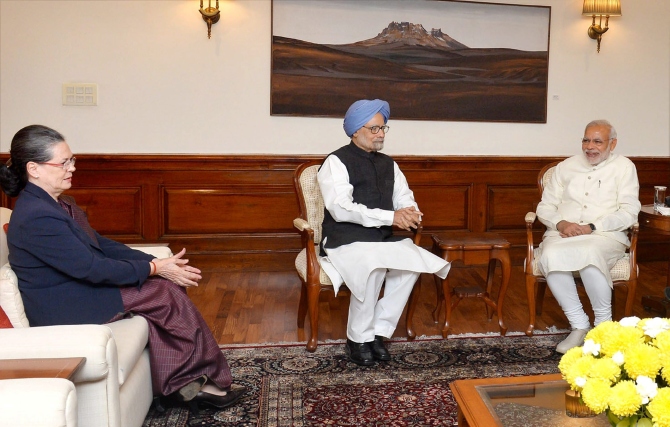5 decisions by Manmohan Singh that proves India needs Economists like him

5 decisions of Manmohan Singh that changed the India for good
After UPA won the 2004 Lok Sabha elections, only few had anticipated that Manmohan Singh would become the Prime Minister of India. Congress President and the natural heir to the throne, surprised everyone by proposing Manmohan Singh’s name as the nominee of the prime ministerial candidate. The order was endorsed by party members and other alliance leaders.
Manmohan Singh was born on 26th September, 1932 in Gah village of Pakistan’s province, then a part of India. The first Sikh Prime Minister, Manmohan Singh held several key positions such as Deputy Chairman of the Planning Commission and economic adviser to the government before being catapulted as the Prime Minister of India in 2004. He was sworn in by President APJ Abdul Kalam.
Known as the best economist of India, Manmohan Singh celebrated his 88th birthday on Saturday. He headed the Congress-led United Progressive Alliance (UPA) government as the 14th Prime Minister. The successful first term earned him his second term. He was the prime minister of India for 10 years, the longest after Jawaharlal Nehru’s 17 years in office and left a mixed legacy of setbacks and achievements. Here are five biggest reforms introduced by Manmohan Singh.
1. Liberalisation
Dr. Manmohan Singh in the historic union-budget of 1991 introduced liberalisation in India, which kickstarted a series of economic reforms. He also brought LPG (Liberalisation, Privatisation and Globalisation) policy which opened doors for foreign investors and helped service sectors in India to expand rapidly. This allowed consumers a wide range of choices.
2. India-US Nuclear Deal
Even with so much backlash, Prime Minister Manmohan Singh signed the India-US nuclear deal in 2005 with US President George W Bush. After the deal, India was recognized as a powerful nation with nuclear weapons for the first time. The nuclear deal enabled India to continue to develop its nuclear facilities and focus on civilian nuclear energy to give strength to the economy.
Read more: 5 mistakes by Indian Government that citizens will never forgive

3. NREGA now known as MNREGA
National Rural Employment Guarantee (NREGA), now known as MNREGA (Mahatma Gandhi National Rural Employment Guarantee Act) is another ground-breaking act that was introduced under Manmohan Singh’s regime. The act enforces that every Indian has “right to work” and provides guaranteed 100 days of work in a financial year to every household with adult members involved in unskilled manual work. The World Bank in its 2014’s World Development Report said that the act is a ‘stellar example of rural development.’
4. Annual GDP growth rate of over 8 per cent for 8 years
The country enjoyed a successful annual GDP growth rate of 8 per cent or above over a period of eight years. This feat has been achieved only by Manmohan Singh. However, in the last stage of UPA-II government, the economy started falling.
5. Right to Education
Right to Education is one of the most important reforms in the country. Also known as Right of Children to Free and Compulsory Education Act, 2009, the act was introduced by Dr. Singh’s government in 2009. It ensured that all the children between the age group of 6 to 14, have access to free education.
Have a news story, an interesting write-up or simply a suggestion? Write to us at info@oneworldnews.com







